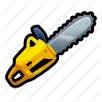3 Essential Safety Tips for Wood Chippers
Wood chippers are the broccoli of the lawn and garden care world: People either love them or don’t care for them. There is no middle ground. Many people think they’re unnecessary, while many people swear by them to aid in the cleanup of their backyards. People who think wood chippers are frivolous must be used to burning or throwing their waste away. Meanwhile, using a wood chipper allows you to safely and responsibly process your garden waste into something that could be reused.
Ever since environmentalism became widespread, societal attitudes towards waste management have changed to favour sustainable disposal and processing over incinerators and landfills. Many jurisdictions have outlawed the burning of waste, and have even refused to accept biodegradable waste in hopes of encouraging composting.
A wood chipper is a machine used to process wood into smaller, more manageable chips. They are especially useful for clearing large areas with wooden debris like branches and fallen trunks, which frequently occur after adverse weather events like hurricanes. With a wood chipper, you can turn debris into wood mulch you can use to improve your garden.
Wood chippers are simple but powerful machines. Debris is fed into the hopper where rotating blades moving at 2000 RPM hack and slash the tree limbs, branches and even small trunks into thin, small chips. Woodchippers require large amounts of power to operate, which is why the machines are almost always run on petrol or diesel engines.
Wood chippers aren’t just environmentally sustainable, they also save the user a great deal of time and effort. Instead of individually chopping wooden debris with a chainsaw or an axe, you only need to feed the wood into the chute and machine will process it into small chips.
With great power comes great responsibility. According to the Centers for Disease Control, over 200 people suffer from injuries associated with operating a wood chipper every year. A small number succumb to their injuries. A wood chipper operator has to read and understand safety guidelines to ensure the well-being of everyone at the site. Failure to do so can result in injuries and even death. Whether you’re an experienced user or a wood chipper newbie, you have to familiarise yourself with the safe and correct use of a chipper.
Here are three safety pointers to get you started.
1. Read the manual
One of the simplest but also the most important things you can do is to read and understand the contents of the user manual. The user manual should contain one needs to know about a wood chipper. Inside, you should find the machine’s specifications, limitations, maintenance guidelines and safety precautions. It’s important that you familiarise yourself with the chipper’s many moving parts.
2. Wear personal protective gear
As I’ve previously mentioned, many workers get injured while operating a wood chipper. Many of those incidents would never have happened had people followed safety guidelines. Your top priority should be safety, that’s why you should always wear safety gear when working a chipper. Here are some of the basic safety gear you should wear.
- Hard hat: Wearing a helmet protects your head from flying projectile which could potentially seriously injure you.
- Goggles/face shield: Always wear safety goggles to protect your eyes and face from debris shooting out at high speeds. As an added measure, you can wear a full face shield to protect the entire face region from flying projectile.
- Ear muffs: Wood chippers are loud machines. Wear ear muffs or other ear protection to protect your hearing.
- Work gloves: Always wear heavy-duty work gloves to improve your grip and protect your hands from cuts and scratches while handling wooden debris.
- Steel-toed boots: Wearing a pair of heavy-duty steel-toed boots help maintain your balance and footing while working and protect your feet from accidental drops.
Furthermore, only wear close-fitting, long-sleeved clothing with no cuffs and dangling ends. Make sure the shirt is tucked into the trousers, and take off all non-essential items like watches and jewellery.
3. Clear the area
Make sure the area around the wood chipper is clear and free of possible tripping hazards. Remove all obstructions and relocate them somewhere far away to ensure easy and unimpeded movement. When using the wood chipper, do not let the chip pile become too large. Shut the machine off and regularly clear the pile.
